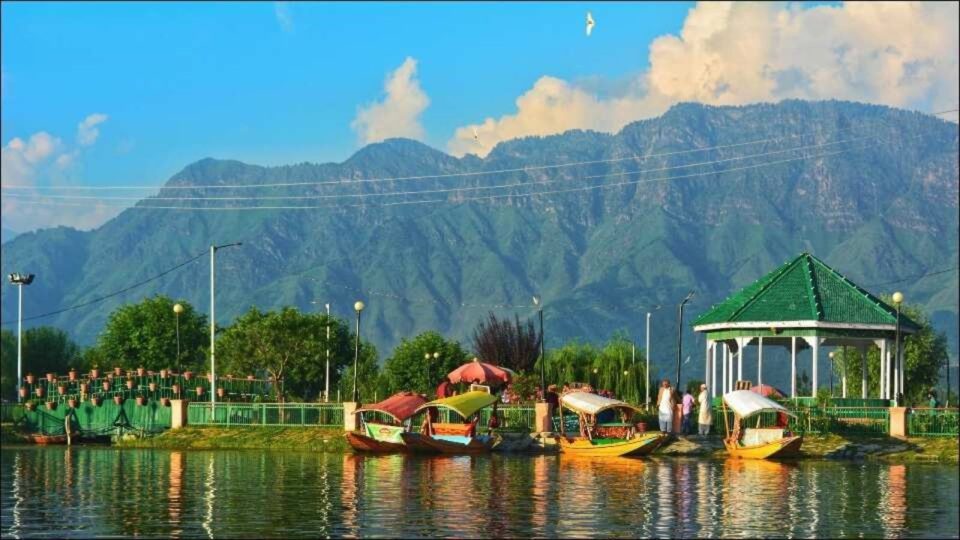Jammu and Kashmir, a region administered by India as a Union territory was once given a special status under Article 370 of the Indian Constitution which had a separate Constitution, flag and an administrative autonomy. In 2019 this special status was repealed in order to bring Jammu and Kashmir to equal status with other states. A reorganisation act was passed, which would reconstitute the state into two Union territories – Jammu and Kashmir and Ladakh which took effect from 31st October, 2019.
Jammu and Kashmir is known for its tourist’s spots where thousands of them go there every year to enjoy the best view and the weather. It is called the “Paradise on Earth” for the same reason. With lakes, mountains, meadows and snowfields it does offer panoramic views till as the eye can see. From skiing in Gulmarg to staying in Houseboats in Srinagar, there’s lots to do in Kashmir. Apart from that, there’s also a lot of culture to soak in, in the form of traditional Kashmiri meals, music and dresses. Some major tourist attractions in Jammu and Kashmir are Srinagar, Gulmarg, Pahalgam, Patnitop, Jammu and many more.
Best time to visit Jammu and Kashmir to have a view of the natural beauty and blossoms everywhere is the summer season i.e., March and June and the best time to enjoy the pristine snowfall and to do some snow activities is during the winter season i.e., December and January.
DAL LAKE located in Srinagar, the summer capital of Jammu and Kashmir, it is enclosed by the Pir Panjal Mountains and the Mughal Gardens which was made during the reign of Mughal emperor Jahangir to heighten its beauty. The canopied Shikaras on the lake are also called the “Gondola of Kashmir”, the floating market on the Shikaras and the houseboats for accommodation which attracts tourists to Dal Lake. The only floating post office in India can also be found in Dal Lake. The lake is also an important source for commercial operations in fishing and water plant harvesting.
Other places to visit in Srinagar which is also called as the “Venice of the East” are the Nigeen Lake, Manasbal Lake magnificent Shalimar Bagh Mughal gardens, Chashma Shahi, Pari Mahal, Nishat Bagh, Hazratbal Mosque, the Jama Masjid, Shankar Acharya temple, Jhelum River and the Indira Gandhi memorial Tulip garden during the month of April when the Tulip festival is celebrated.
DAL LAKE
WULAR LAKE located in Bandipora district in Jammu and Kashmir is the largest freshwater lake in Asia. The size of the lake varies seasonally. It plays a significant role in the hydrographic system of the Kashmir valley by acting as huge absorption basin for annual floodwater. Government of India has launched boating, water spots and water skiing in collaboration with Kerala tourism and Jammu and Kashmir tourism.
WULAR LAKE
GULMARG, the “meadow of flowers” in the Baramulla district of Jammu and Kashmir. It is considered as the ‘heartland of winter sports’. It is a great place to try sledding, skiing, tobogganing and snowboarding. Another great attraction of this place is Gulmarg Gondola which is a cable car that is connected high into the mountains and from there you can witness the surreal views of the valley. Maharani temple which is also called as the Shiva temple of Gulmarg and which is also visible from all corners of Gulmarg should be added to the bucket list. Along with it a visit to the St. Mary’s church is a must. One of the recent tourist attractions in Gulmarg is the Igloo Café which has been recognised as the largest Igloo Café in Asia. The tourists can halt for a while to enjoy the view and the hot beverages.
GULMARG, IGLOO CAFE
PATNITOP is the most underrated part of Kashmir. The green meadows, set against the snowy white hills and framed by a blazon blue sky are a sight to behold. Exploring the region by a Pony, much like the locals do, is a great way to truly appreciate this marvelous vista.
PATNITOP
There are two pilgrimages in Kashmir which are extremely popular, first is the Amarnath Yatra which is undertaken to worship a Shiva Linga made naturally by snow and the sec0onf one is the Vaishno Devi Yatra. This starts from Katra and takes the pilgrims to the shrine of Mata Vaishno Devi in the Trikuta Mountains.
VAISHNO DEVI AND AMARNATH TEMPLE






